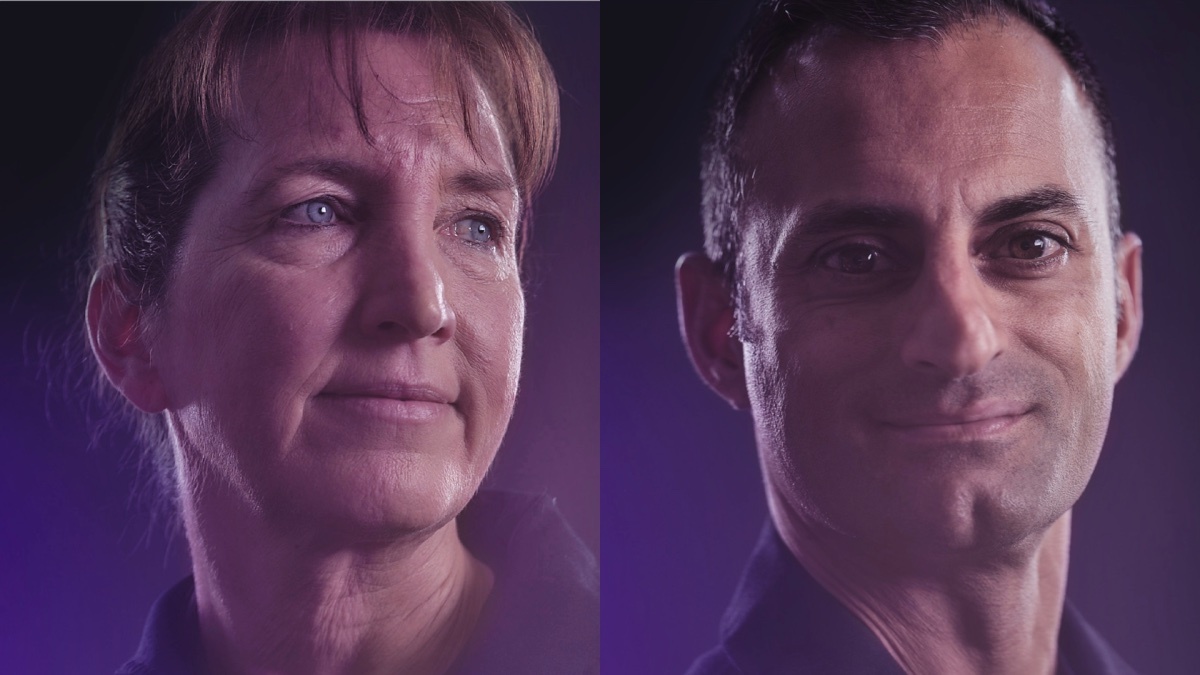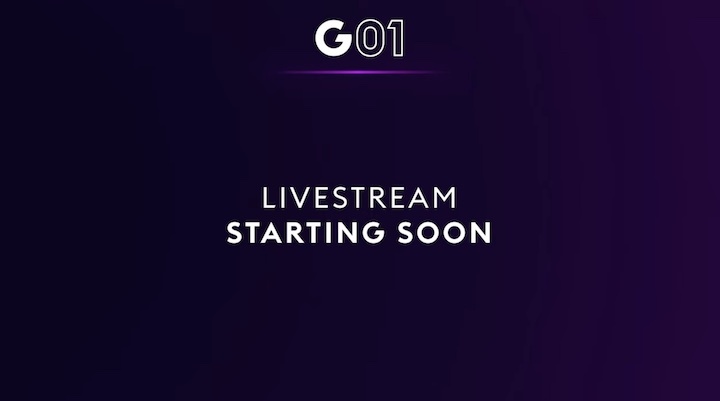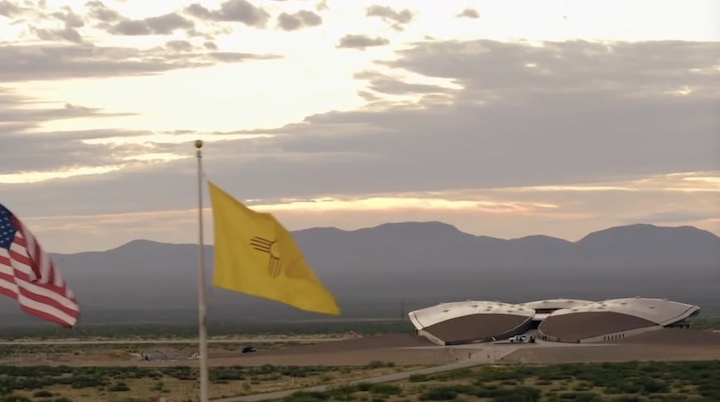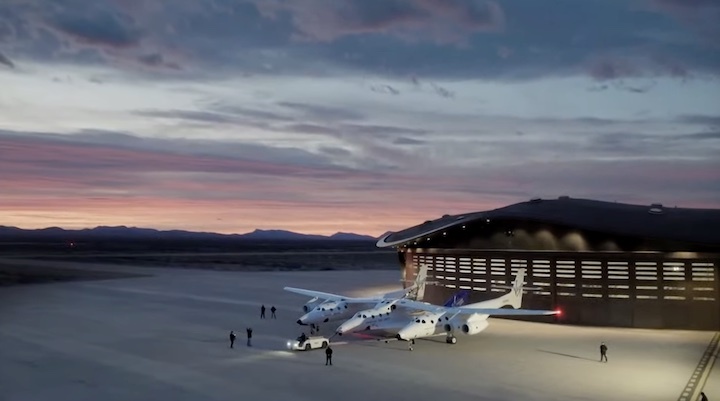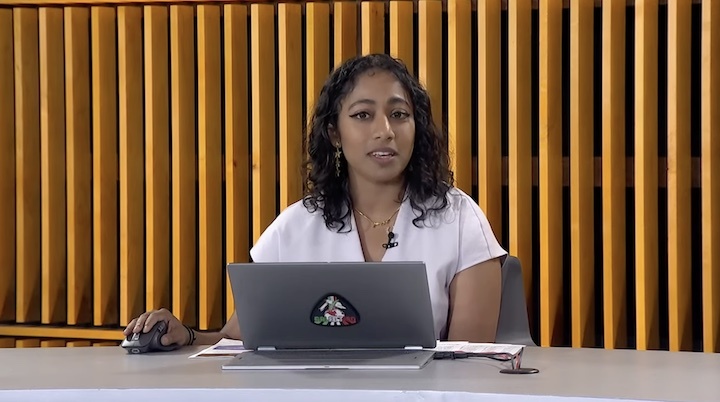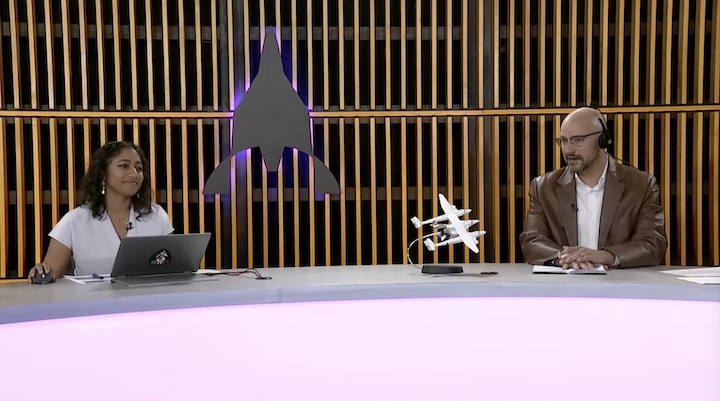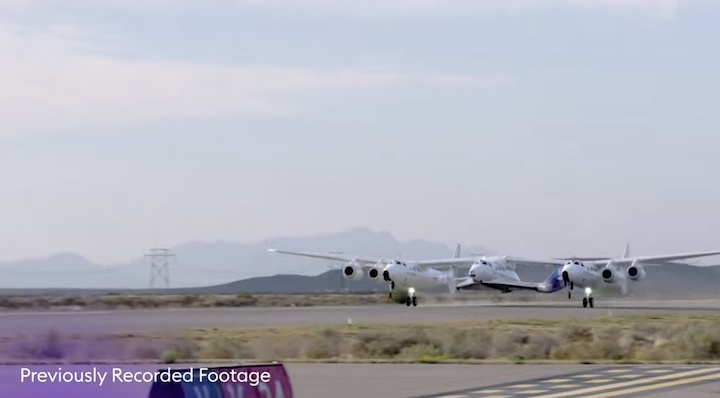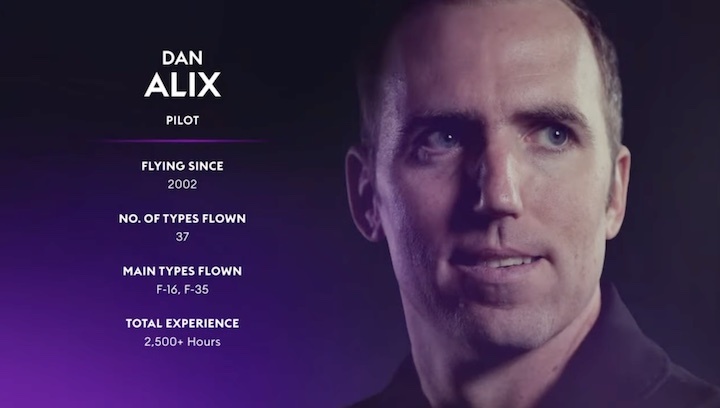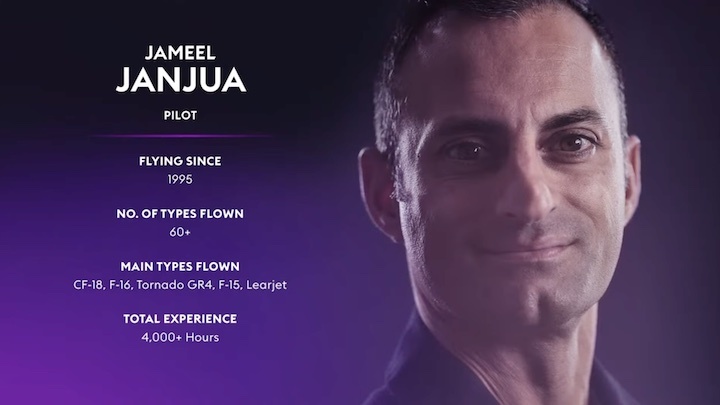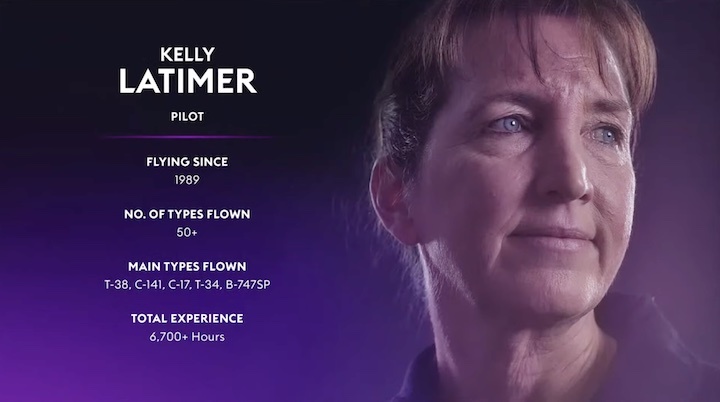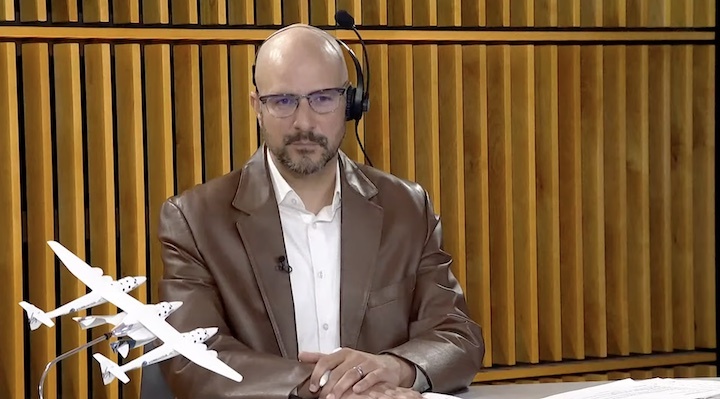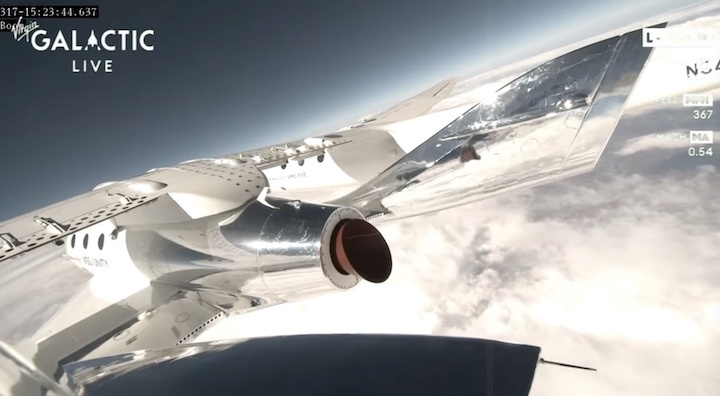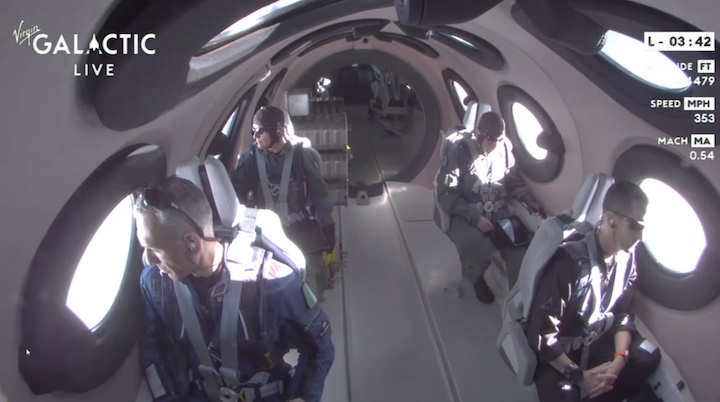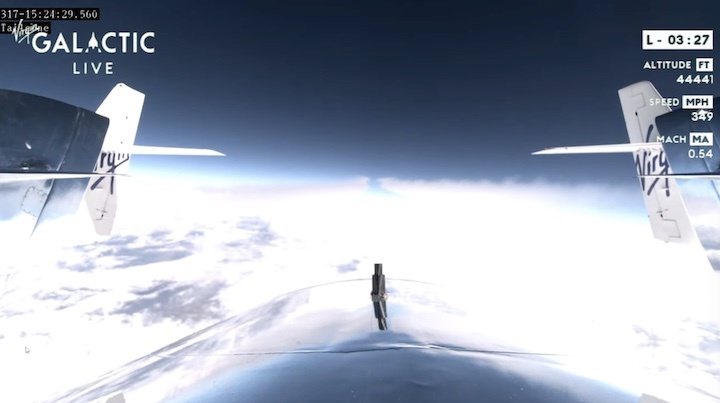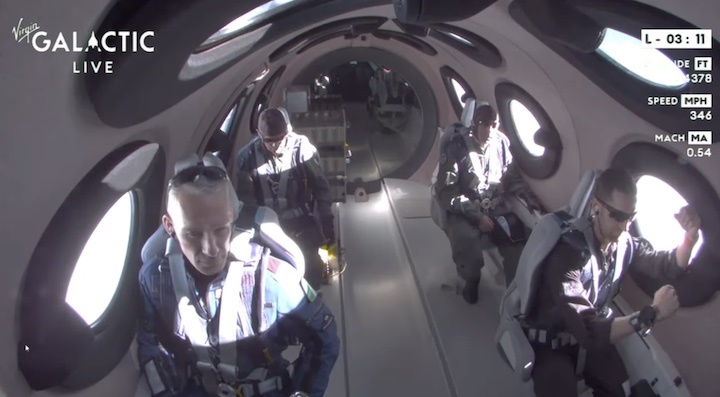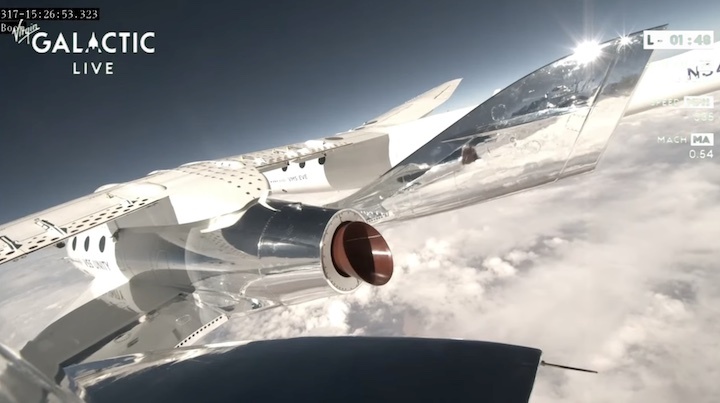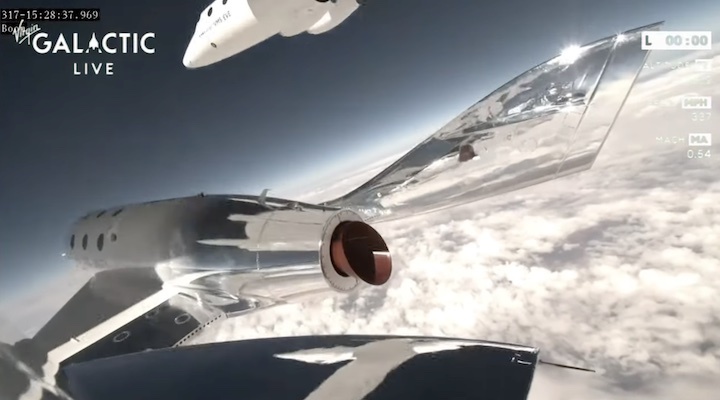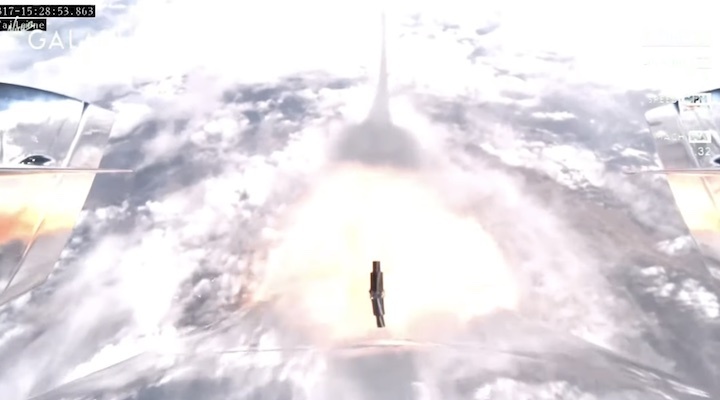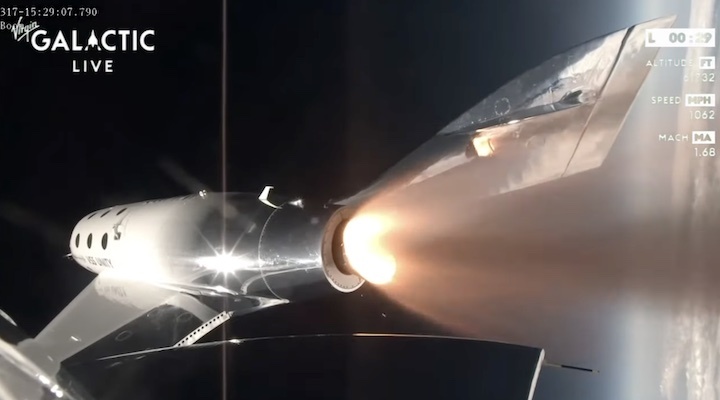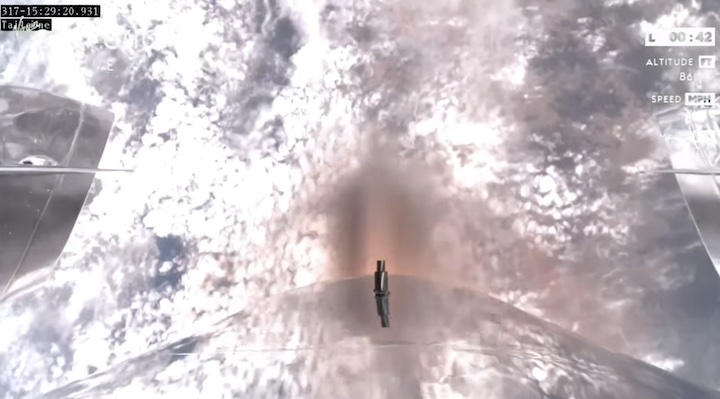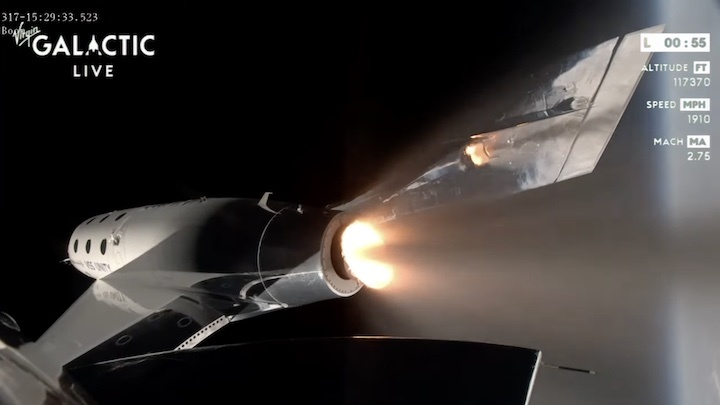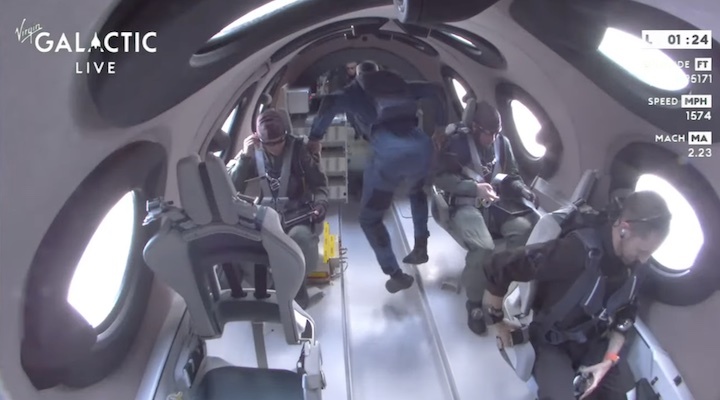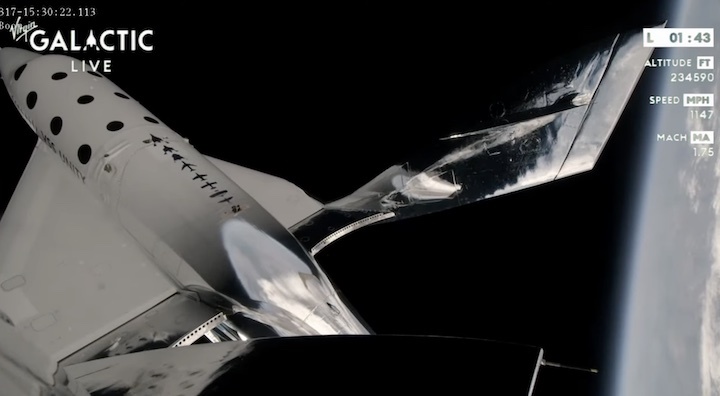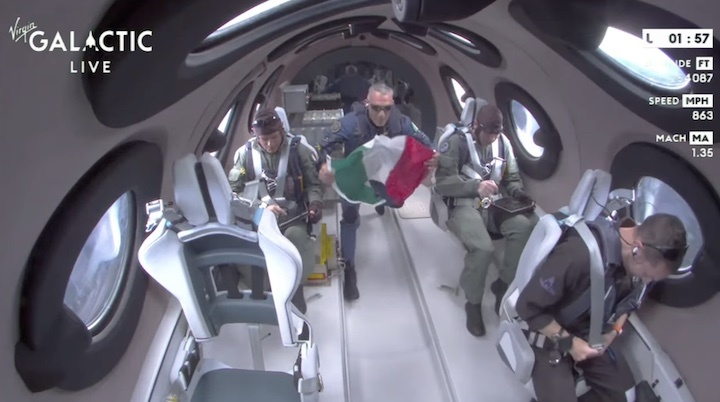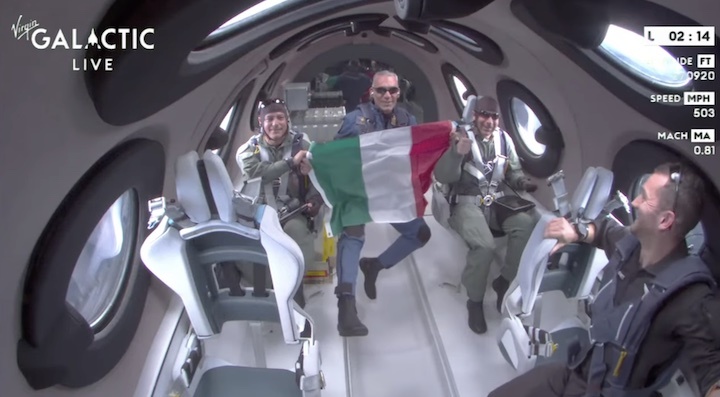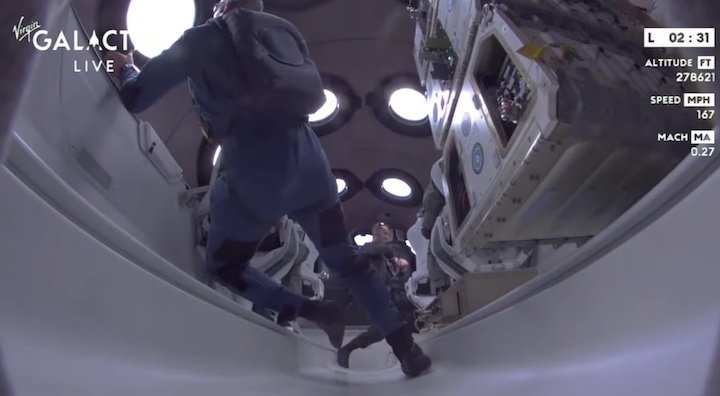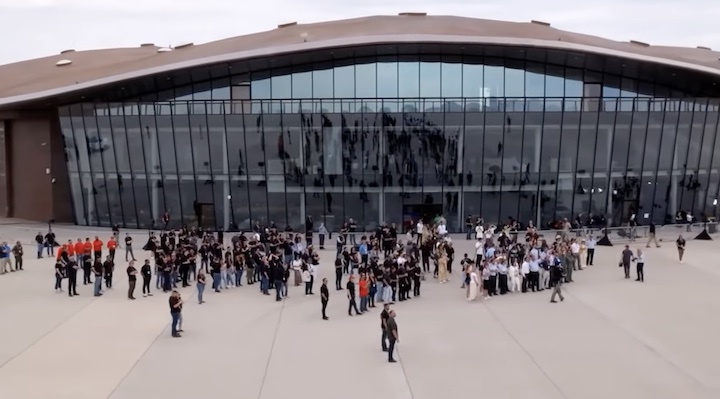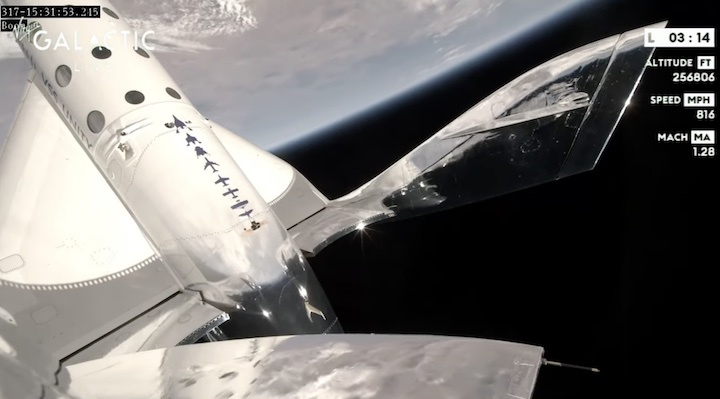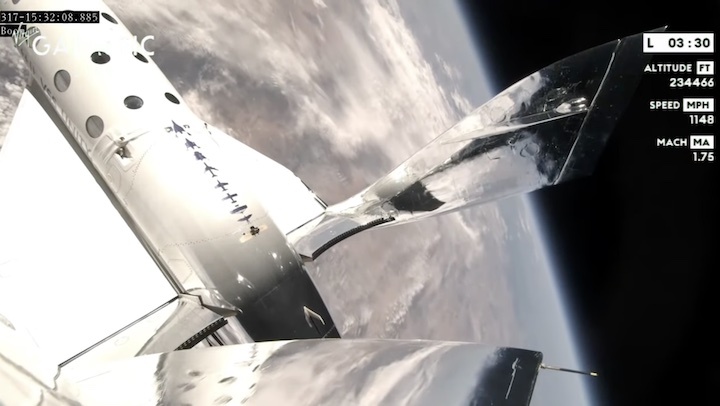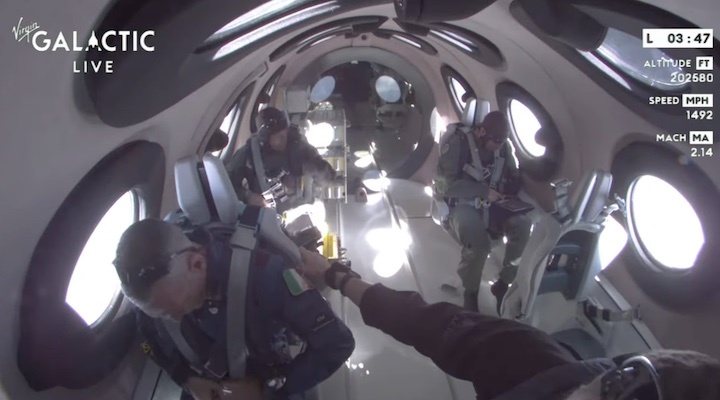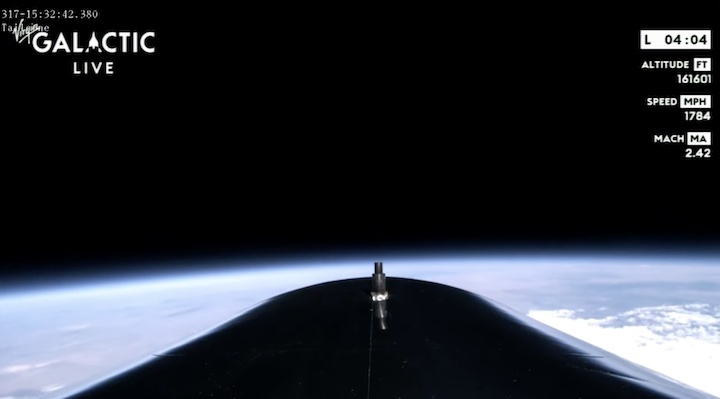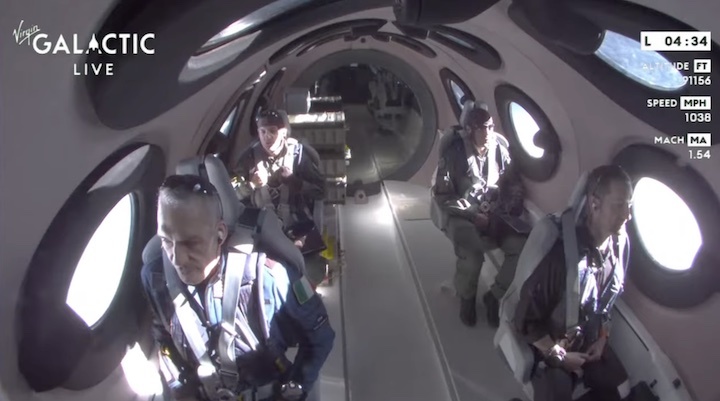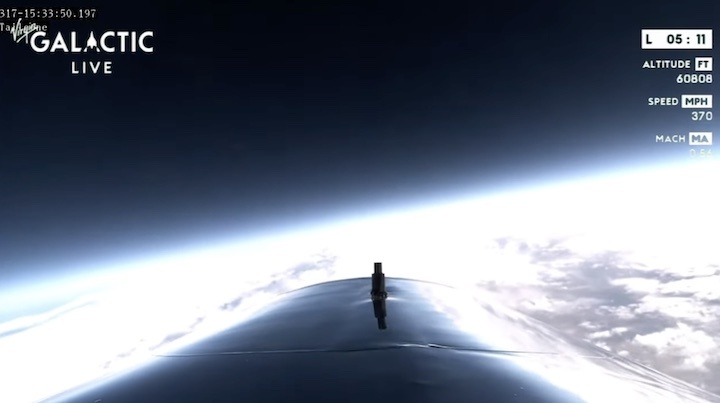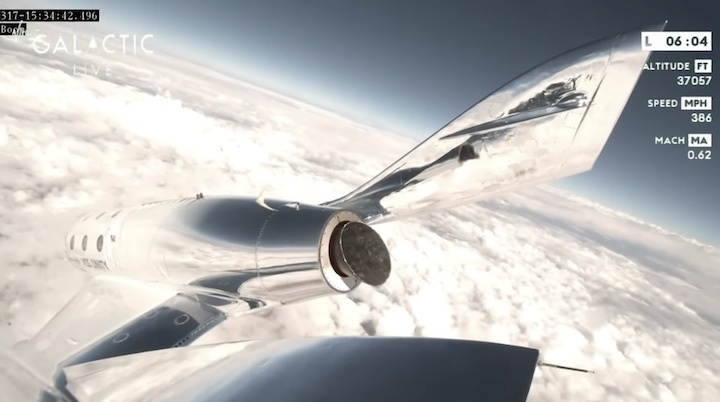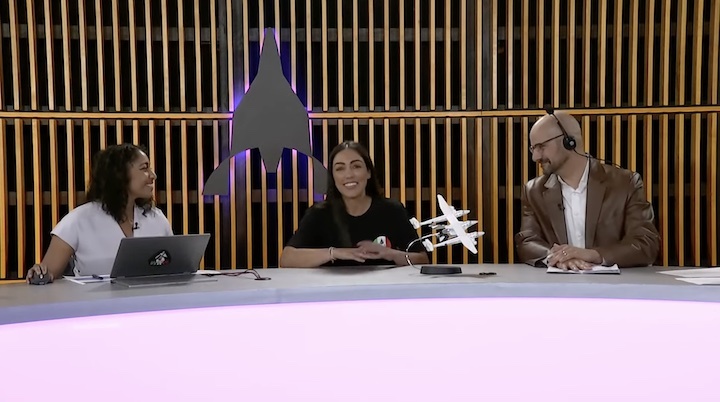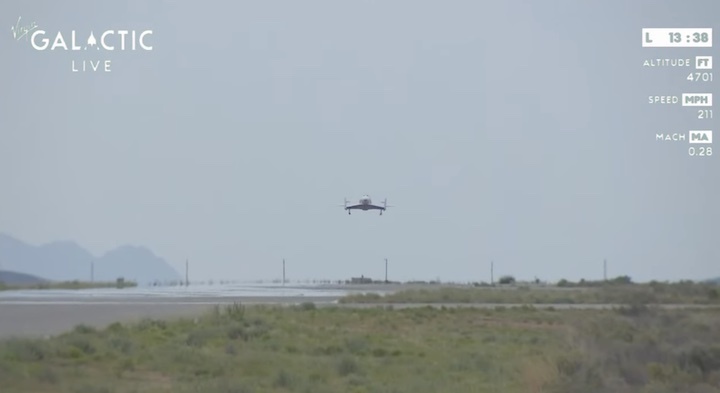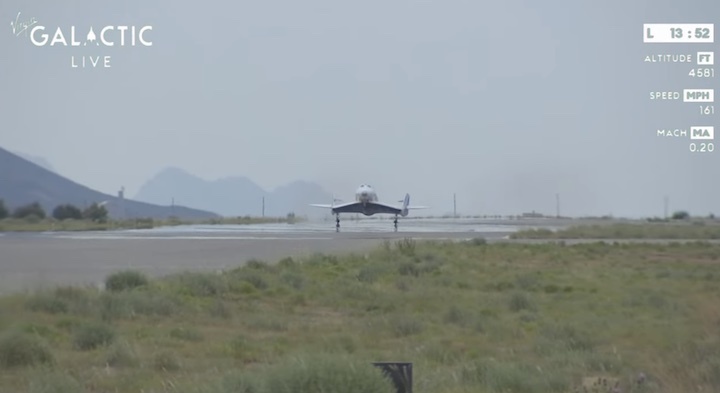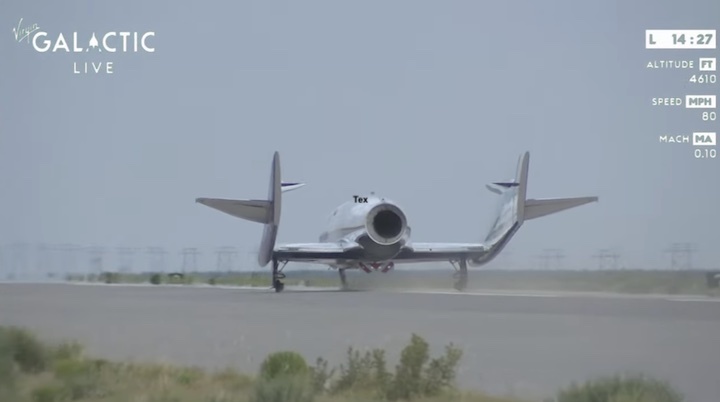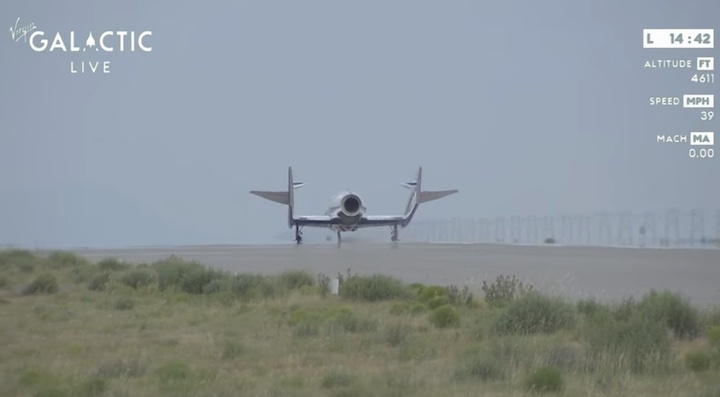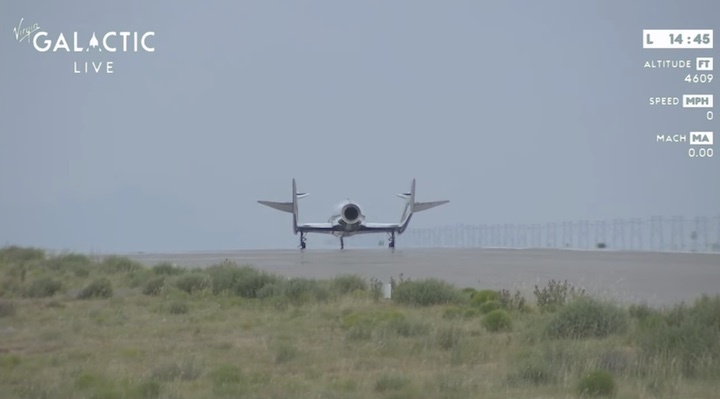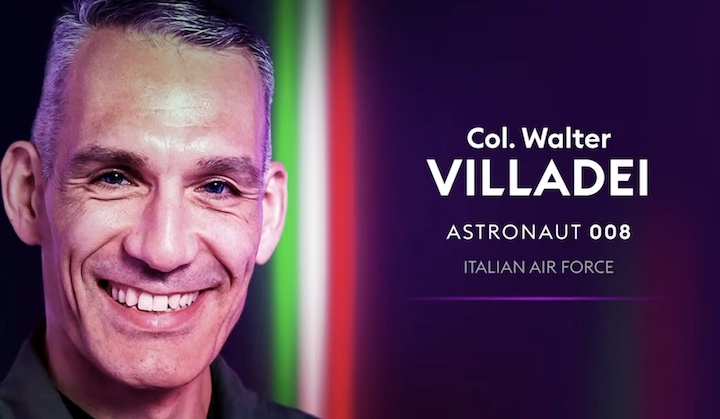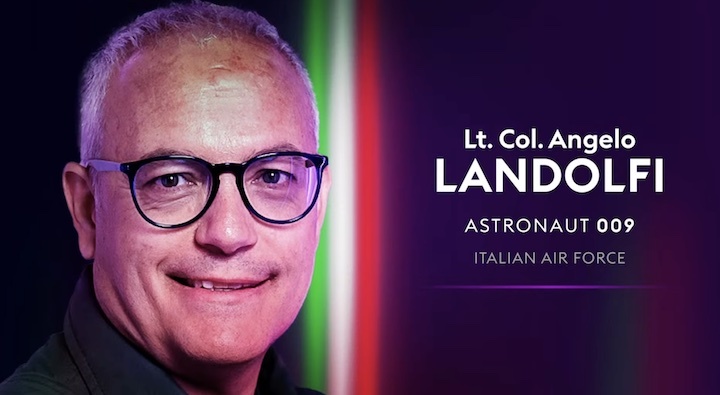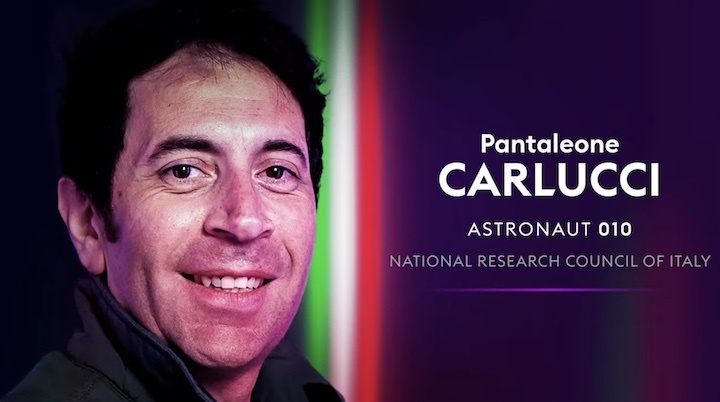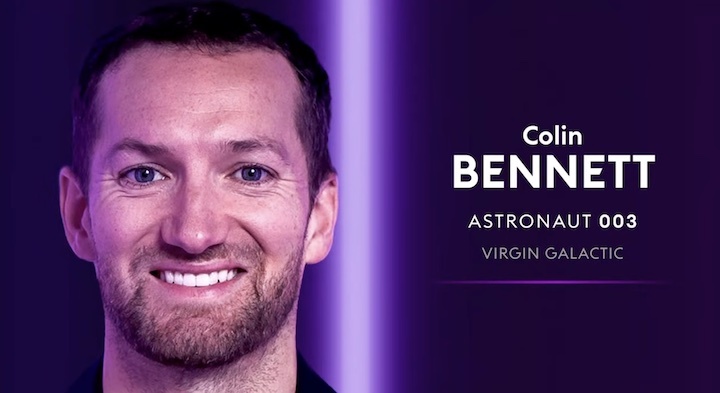17.06.2023
Virgin Galactic to send Italian researchers to space, then regular commercial flights
Virgin Galactic says it's aiming to launch its next flight at the end of June
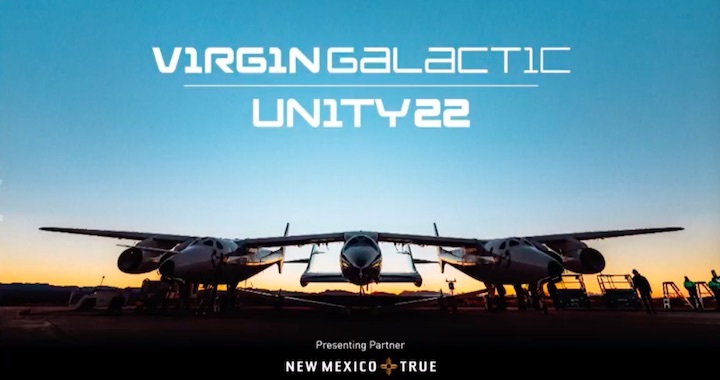
ALBUQUERQUE, N.M. -- Virgin Galactic announced Thursday that monthly commercial flights to the edge of space will begin for ticket-holders in August, following a research flight planned for the end of June.
The space tourism company will be taking up a team of specialists with the Italian Air Force and the National Research Centre of Italy to conduct microgravity research. The window for that research flight will begin June 27 and span the next three days, with timing depending on the weather.
After that, those who have been waiting more than a decade for their ride aboard Virgin Galactic's rocket-powered space plane are expected to get their chance. The company said the first of those flights will begin in early August, with monthly flights following that.
“This next exciting chapter for Virgin Galactic has been driven by innovation, determination and a commitment to delivering an unparalleled and truly transformative customer experience,” CEO Michael Colglazier said in a statement.
Virgin Galactic has been working for years to send paying passengers on short space trips and in 2021 finally won the federal government’s approval. The company completed its final test fight in May.
After reaching an altitude of nearly 50,000 feet (15,000 meters), Virgin Galactic’s space plane is released from a carrier aircraft and drops for a moment before igniting its rocket motor. The plane shuts off once it reaches space, providing passengers with silence, weightlessness and an aerial view of Earth. The rocket ship then glides back to the runway at Spaceport America in the New Mexico desert.
Virgin Galactic has sold about 800 tickets over the past decade, with the initial batch going for $200,000 each. Tickets now cost $450,000 per person.
The company said early fliers have already received their seat assignments.
The highest profile test flight came in July 2021 when Virgin Galactic founder Richard Branson beat fellow billionaire and Amazon founder Jeff Bezos and rocket company Blue Origin into space. Bezos ended up flying nine days later from West Texas, and Blue Origin has since launched several passenger trips.
Quelle: abcNews
----
Update: 27.06.2023
.
Virgin Galactic has a launch date for its first paying space tourists
The company's climb to space tourism has been a nearly 20-year-long journey.

Virgin Galactic’s SpaceShipTwo VSS Unity during its first flight to suborbital space in December 2018. Virgin Galactic via NASA
This summer, Virgin Galactic will finally start flying paying customers to the edge of space in the company’s rocket-powered plane, SpaceShipTwo. The first flight, a mission named Galactic 01, will launch as soon as June 27.
If Galactic 01 soars to space’s edge as anticipated, it will have been a long time coming—nearly 20 years. Virgin Galactic’s billionaire founder Richard Branson first announced his entry into the space tourism industry in 2004, with a goal of flying customers in 2007. Delays and a fatal in-flight accident stalled progress. Although Branson flew aboard SpaceShip Two in July 2021, Virgin Galactic hasn’t yet had a commercial flight.
This summer’s flights are poised to change that. The company is finally prepared to open the cordon in front of its line of more than 800 waiting customers, who paid between $250,000 and $450,000 a piece. But it may be too little too late to make Virgin Galactic a sustainable player of the space tourism game.
“I do not have high hopes for Virgin Galactic’s long-term stability due to their excruciatingly slow pace to become operational, their high company expenses, and their mixed safety track record,” says Laura Forczyk, a space industry analyst and founder of the consultancy company Astralytical. “I don’t think that their revenues are going to be able to catch up with their expenses unless there is a significant change in operations.”
Virgin Galactic was founded in a ray of optimism cast by aerospace engineer Burt Rutan and his company Scaled Composites. Rutan and Scaled Composites designed and built a sub-orbital spaceplane dubbed SpaceShipOne that successfully flew to space twice within two weeks in 2004, winning the $10 million Ansari X-Prize. Later that year, Branson joined forces with Rutan to develop SpaceShip Two, and Virgin Galactic was born.
Like SpaceShipOne, the Virgin Galactic SpaceShip Two is a rocket-propelled space plane. Carried aloft by a larger aircraft dubbed WhiteKnightTwo, the space plane detaches at 49,000 feet altitude, the rocket ignites and powers the space plane to just more than 50 miles altitude, considered the threshold of outer space by the US government. SpaceShip Two then glides back to Earth, using an innovative “feathering” system that rotates the space plane’s twin tail wings upward and toward the plane’s front, using aerodynamic drag to slow the craft during reentry.
But by banking on that innovative technology as the key to unlocking the space tourism market, Virgin Galactic may have put itself at a major disadvantage. “They had way more technological problems with this less mature technology than they anticipated, and they had significant safety concerns” Forczyk says. “Traditional rockets have a long history of launching uncrewed as well as crewed spaceflight. Space planes do not have that history.”
Those safety concerns became front and center in a tragic fashion on October 31, 2014, when a SpaceShipTwo space plane dubbed VSS Enterprise broke up in-flight over the Mojave desert, killing one of the two test pilots aboard. The National Transportation Safety Board determined that one of the pilots had deployed the feathering system too early during the test flight, causing the plane to crash.
Unlike traditional rockets, space planes cannot be tested without a human crew on board, Forczyk points out, increasing the risk during development. That may have slowed Virgin Galactic down compared to competitors such as Blue Origin, which uses traditional rockets and space capsules for tourism. Blue Origin founder Jeff Bezos reached space atop his company’s New Shephard rocket in 2021—the same month as Branson’s space plane flight—and has since gone on to fly dozens of paying customers.
“They absolutely had competitors that took advantage of the fact that they were not online when they said they would be,” Forcyzk says.
Having stumbled out of the starting blocks, is it possible for Virgin Galactic to catch up in the space tourism race? Its tasks are twofold. The company needs to raise capital, “and they need to prove their safety and prove their operations in order to raise that capital,” Forczyk says. “So I don’t know what this summer will bring, but I do believe that we should expect more delays. Hopefully, we will see more flights.”
It also needs to prove that those flights are safe. “Their entire business case relies on public perception of these people who are willing to fly on their vehicle, either for the fun of it or for research,” Forcyzk says. “They don’t have another business place to fall back on, unlike their competitors.”
Virgin Galactic is in many ways a space company built for 2004—the pre-iPhone era—not 2023. It can fly space tourists and researchers, but can’t carry cargo offworld. Unlike Blue Origin, which is also building a lunar lander for NASA, and Elon Musk’s SpaceX, which launches satellites and astronauts for NASA and the Department of Defense, Virgin Galactic’s hopes rest only on its one craft and the tourists who are willing to ride it.
Quelle: POPULAR SCIENCE
----
Update: 29.06.2023
.


